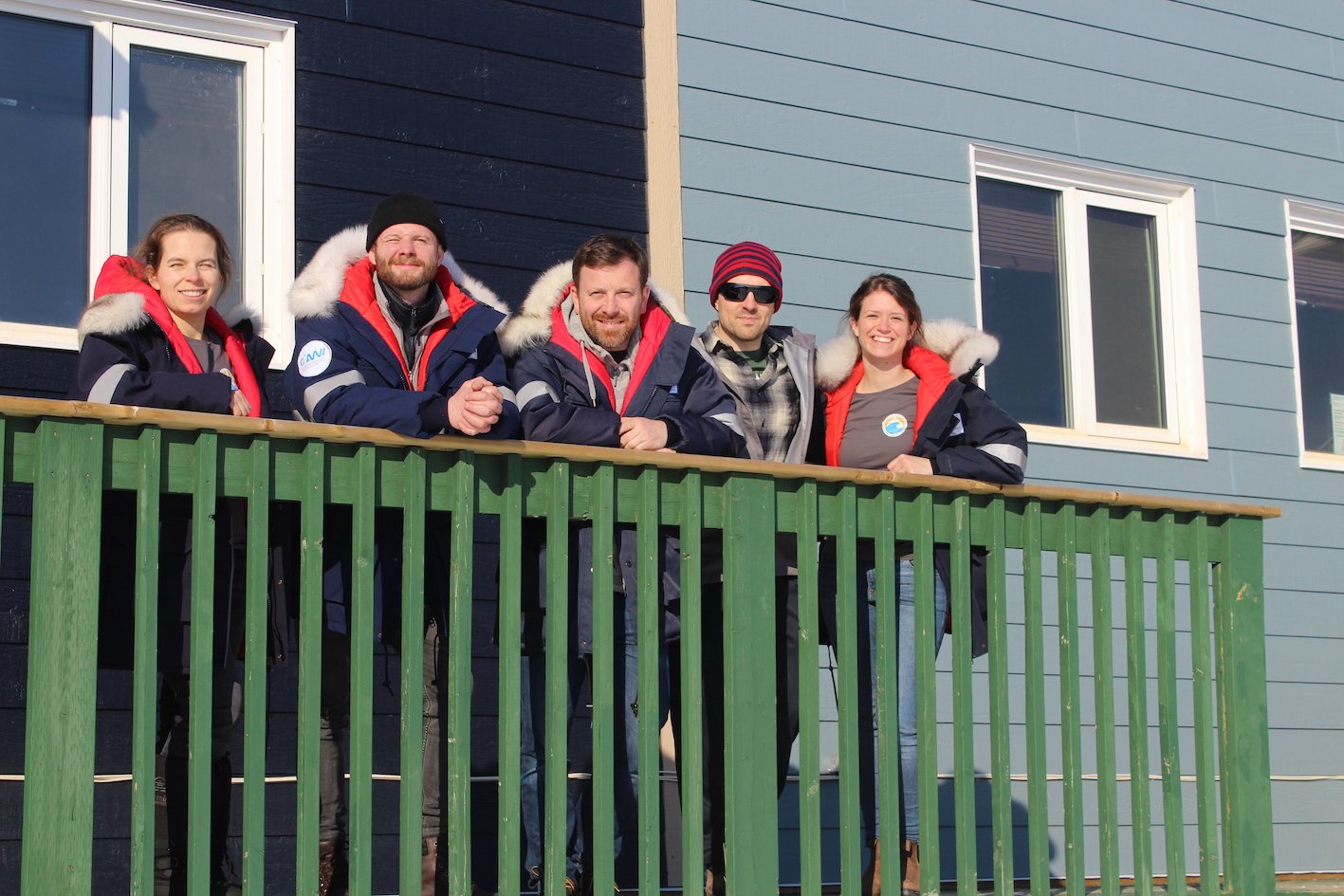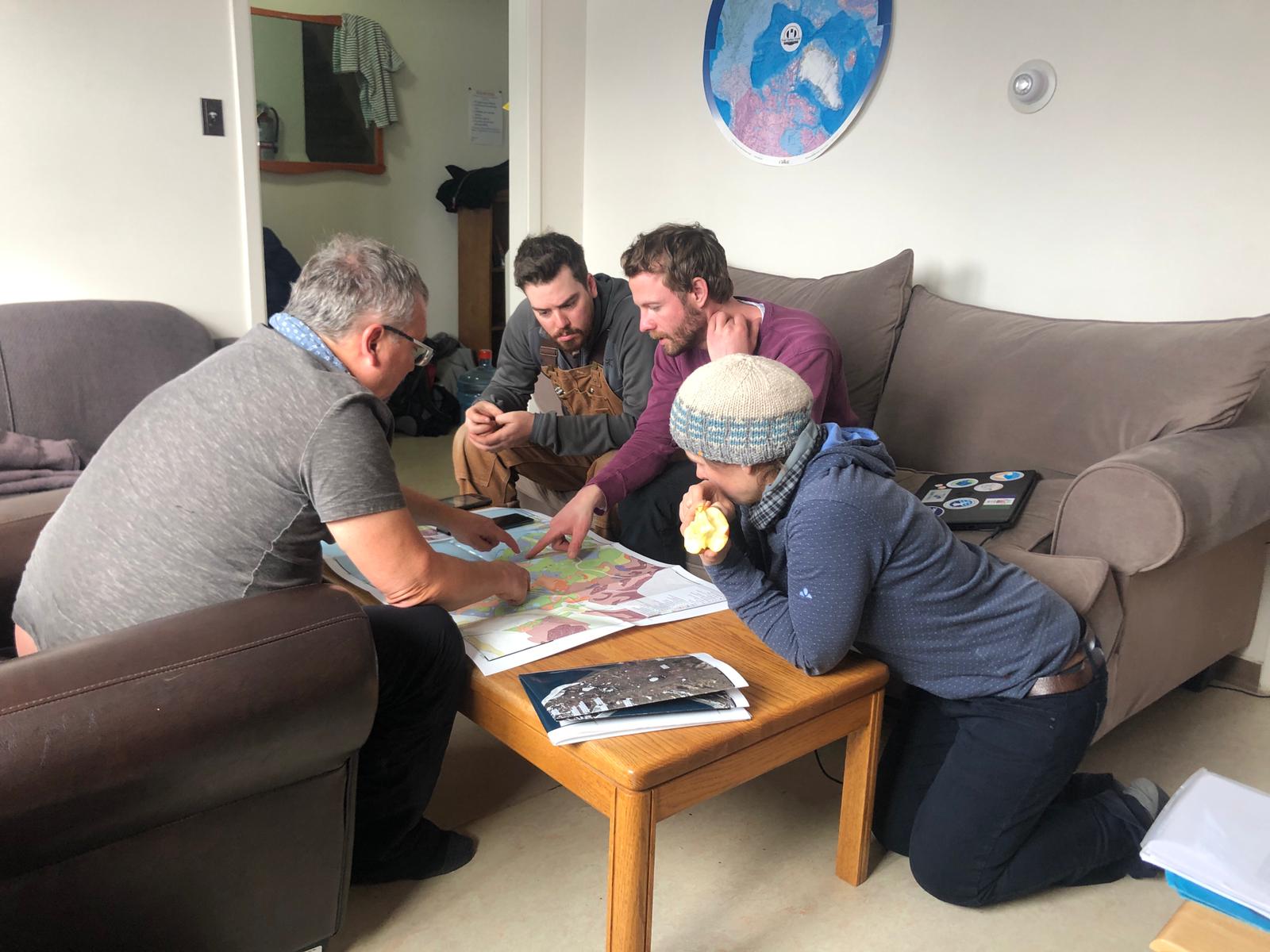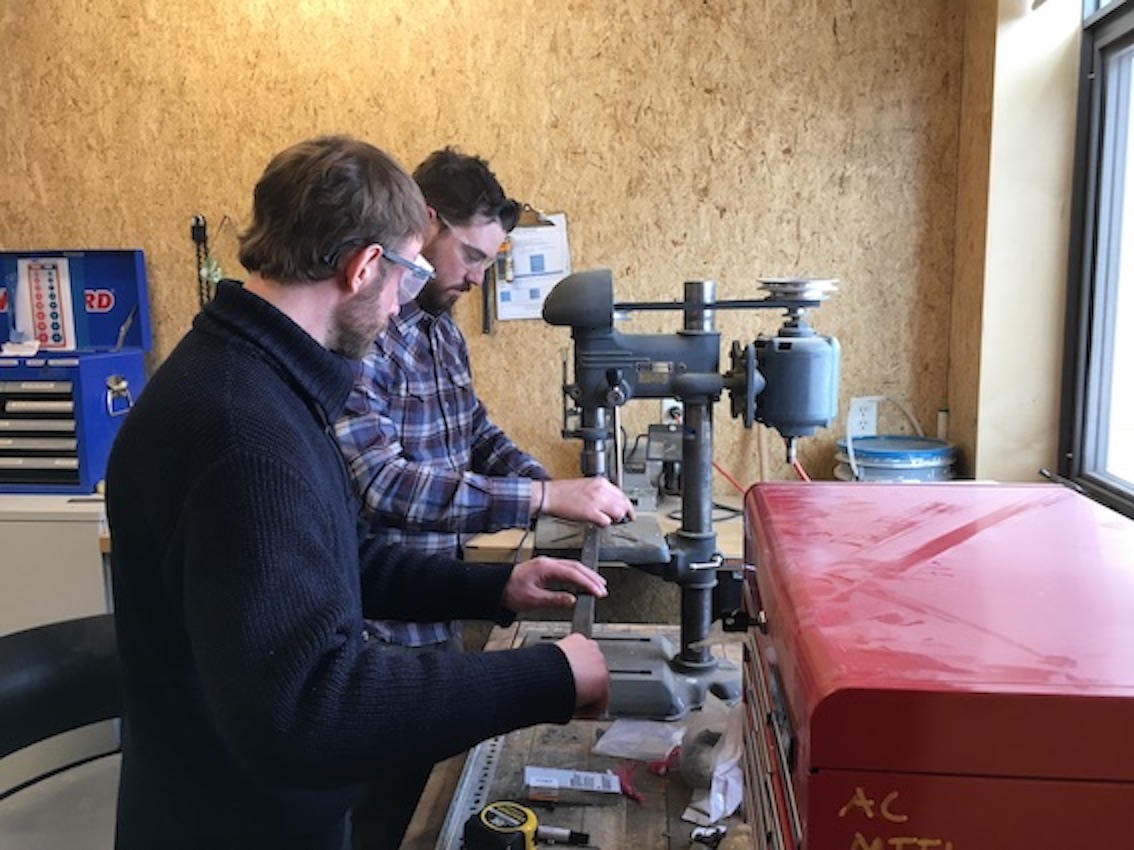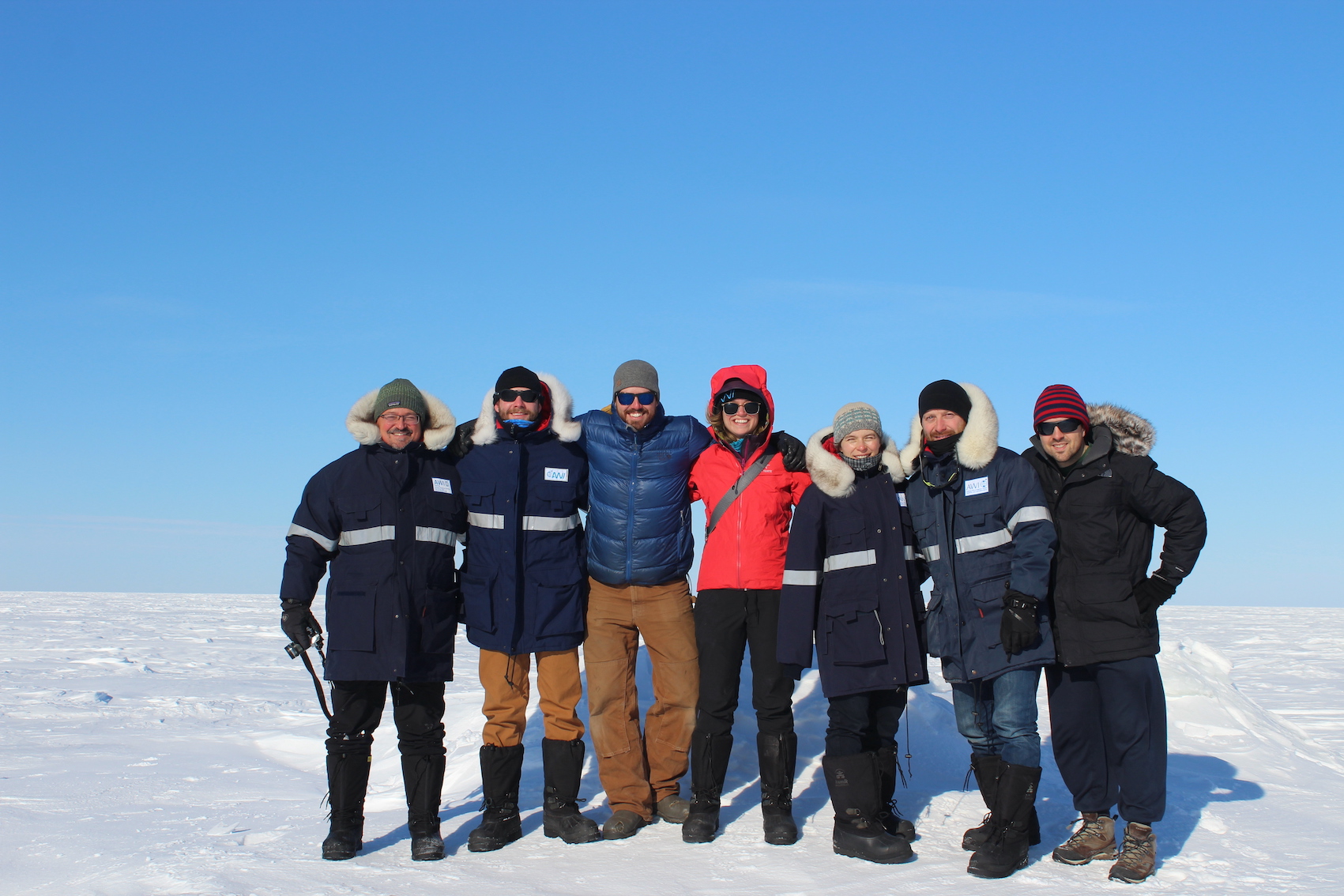On April 9, 2019, we started our journey from Potsdam (Jan, Jule), Amsterdam (George), and Sherbrooke (Joëlle, Vincent) to Edmonton, where we met up and continued to Inuvik in the western Arctic. At Inuvik airport we met Samuel and Edward McLeod, who work as rangers in Herschel Island Territorial Park, which will serve as our field base camp. We then went on to our accomodation, which is hosted and maintained by Aurora Research Institute. Four rowhouses provide plenty of room for researchers doing field work in the region.
This year‘s Nunataryuk spring campaign has four main goals: Sediment cores from the upper two meters of frozen ground on the mainland will be used to quantify and characterize organics, and particularly carbon, in the ground (George and Andreas). For this part of our agenda, it is especially important to cover all main landscape units. Sediment cores from the large drained lake basins on the coastal plain record the environmental history of these sites. Their post-drainage carbon and vegetation dynamics will be the second big research topic (Juliane). This task will also require a high spatial coverage. Travelling with snowmobiles across the snow-covered frozen tundra will hopefully allow us to cover a lot of ground and get a realistic idea of carbon and landscape dynamics in this remote region of the world. Sampling sea ice, sea water and sea floor sediment will be the third focus. We will move along two perpendicular transects, following the gradient of decreasing influence from the Mackenzie river water and the gradient from the coast seawards (Hugues). Joëlle and Vincent will study the dynamics, composition and physical properties of the snowpack on Herschel Island. They will work in the catchments of two small adjacent creeks („Ice Creek“).
Preparations in Inuvik are moving along smoothly, and we hope to fly to Herschel Island on Monday. We have checked our freight and prepared it for the upcoming transfer, registered our presence and work in Ivvavik National Park with Parcs Canada, finalized all licences, tested and completed our scientific equipment, and bought food supplies for the field. There are a million things to consider when eight persons with a diverse set of research agendas and field methods are involved. The warm spring weather with day temperatures in the range of -7 to -10 °C is adding to the good spirit in the group and making our work quite enjoyable.
This afternoon two more expedition team members arrived from Vienna (Andreas) and Whitehorse (Louis-Philippe). Tomorrow we will test our coring systems and, weather permitting, we will be flying out to Herschel Island on Monday, April 15. Stay tuned for the next blog post!
Snowy regards
Andreas, George, Jan, Joëlle, Juliane, Louis-Philippe, and Vincent
Update April 15:
We did not actually make it to Herschel Island today, as flying conditions only improved this morning and consequently the landing strip was not prepared yet. We were fully prepared and ready to go, so there was not too much for us to do today and we decided to visit the pingos in Tuktoyaktuk and take in the feeling of being at the end of the world, or one of its ends anyway, standing at the edge of the frozen and windbeaten Arctic Ocean. It was a humbling and extremely beautiful experience, which gave us some time to think about this landscape and what it might mean to live here.






